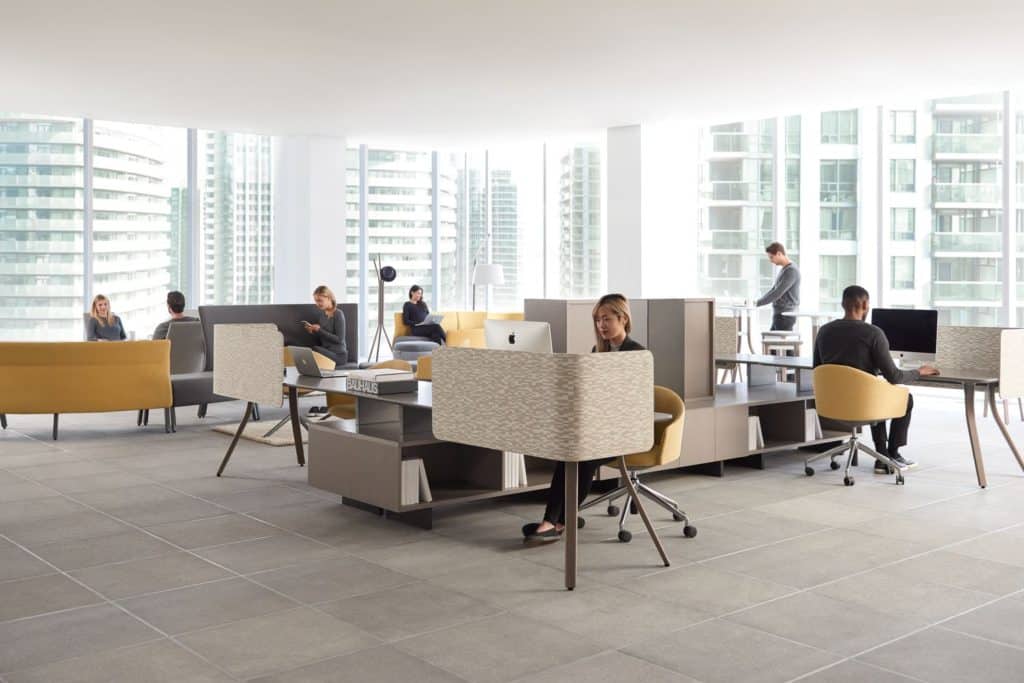
Over the past few years, office design trends have shifted away from closed off or opulent spaces to focus on the needs of employees.
As declared in a 2016 Inc. article, the open office concept is on the decline. Employees needs have shifted to a mix of open and private spaces to stay productive, culturally engaged, and collaborative. Cue the agile office. This type of work space expands upon the idea of open concept offices but with the accommodation for employee’s need for privacy.
Far from simply being a functional place to work, agile offices aim to deliver a unique, holistic, and inspiring experience to employees. The basic agile office will have the familiar open floor plan enhanced by breakout areas for team projects, quiet zones for focused work and one-on-one meetings, and easy access to all resources.
An agile work environment gives employees more control over how they work, where they work, and who they work with, all of which positively influence the employee experience.
Agile spaces are a subset of Activity Based Planning. This type of planning strategy enables business owners to save money by focusing on what your employees do rather than which department they are in, providing them with office space that is flexible and adaptable to their needs and activities.
Agile work spaces are process-driven work environments. They are adaptable and movable.
Agile spaces can include:
- Focus space
- Collaboration space
- Team meeting space
- Relaxation space
- Telephone conversation space
- Concentration space
- Inspirational space
The agile work space uses the working area more efficiently. It typically utilizes an unassigned seating model to foster collaboration and maximize space. Employees transition from dedicated workstations to shared spaces that workers use as needed. By introducing an agile environment, businesses can make up to a 20% property saving.
According to Randstad, 80% of workers say they like agile work spaces. Workers report increased productivity, creativity, and job satisfaction. Over 61% of workers didn’t believe this type of workplace interferes with their personal lives, or their ability to disconnect from work.
Agile work spaces improve workflow and productivity by accommodating the multifaceted needs of an office, like when you need to work with a team and then work independently. Knowing you have choices of where in the office space to work, eases distractions. Even companies that are locked into leases in commercial office buildings are incorporating these new space saving design elements to set them apart.
To have a successful agile office, or any productive office, the work style must be supported by the owner and office management.
There may be additional tech and furniture requirements to support a flexible work space. Our experienced team at ITL will assure that the right products are selected for your agile office. j